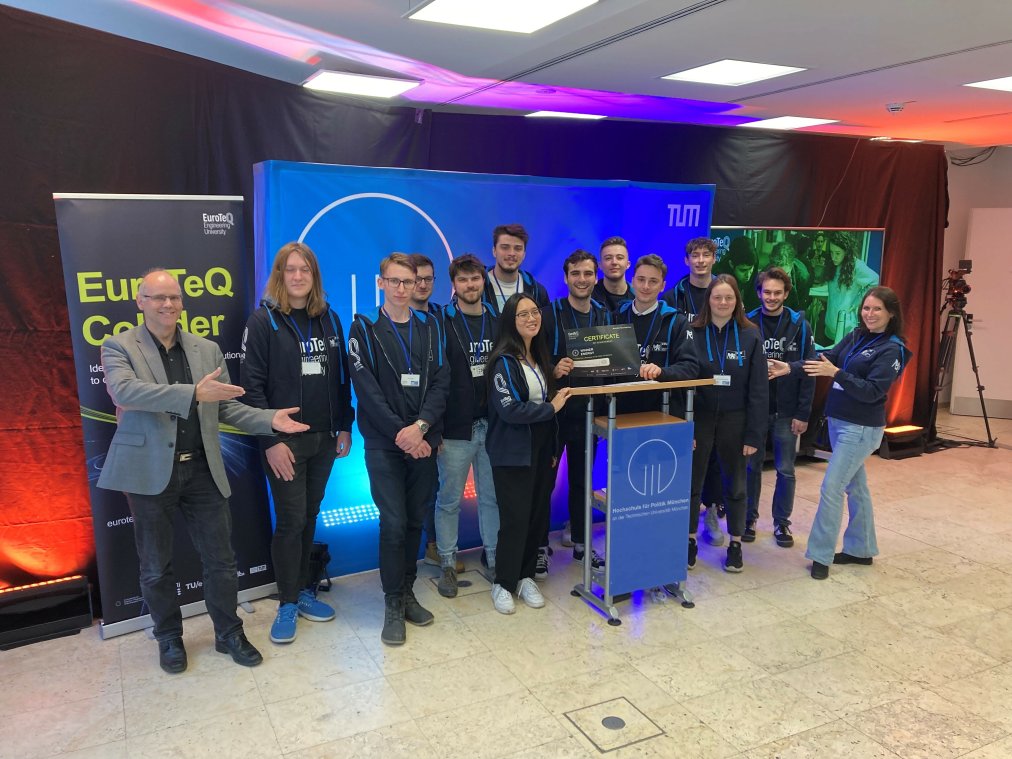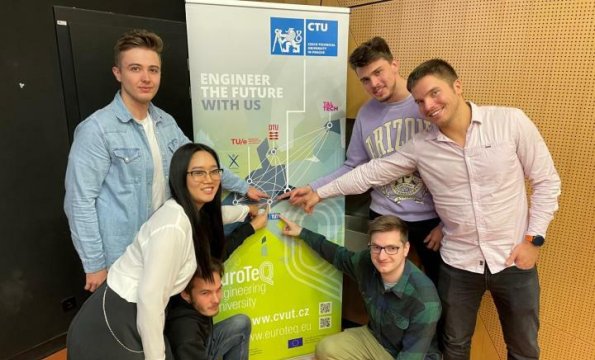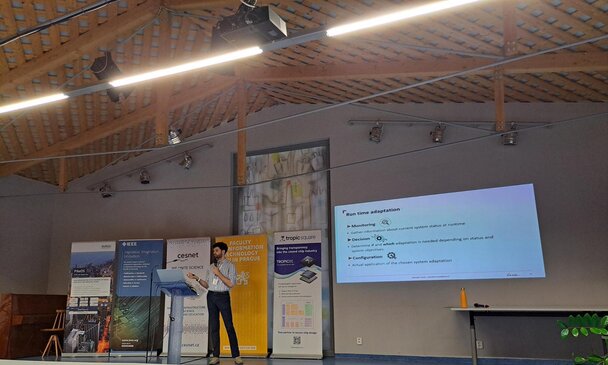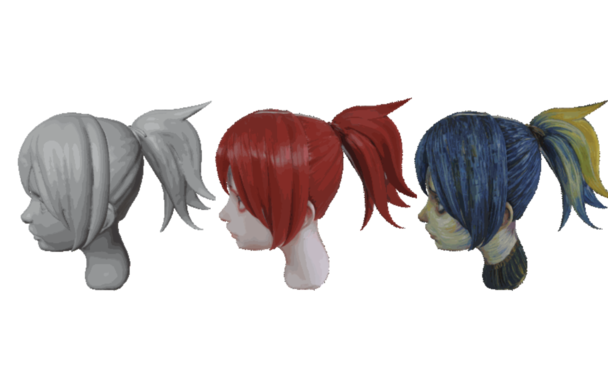
A team of students from FIT and FA CTU has developed an application that will help recycle non-recyclable plastics that normally end up in the sea as waste. The Optimum Recycle app helps to find a non-recyclable plastic product suitable for subsequent recycling using a special Bluewave method. The students took the app to the final of the EuroTeQaThon, an international competition held in Munich on 23–25 November with the theme “Leave No Waste Behind”.
Imagine an ordinary plastic bottle. Such a bottle can only be recycled once and then becomes unusable plastic. A team of students from FIT CTU – Štěpán Štrba, Tomáš Pospíšil, Filip Hladej, Marek Bajtalon and Richard Vacenovský – and a student Hai Anh Nguyenová from FA CTU developed an application that will help with the recycling of such non-recyclable plastics using a Bluewave method. The app was created in response to the Plastic Browser Tool challenge from Archwey as part of the EuroTeQaThon finals. The best student entries, which were produced as part of the Collider project competition, sponsored by the EuroTeQ alliance, advanced to this competition.
The challenge was to create a tool that would allow the company to select non-recyclable plastic products suitable for recycling using the Bluewave method. However, it costs quite a lot of money to make a product this way compared to the traditional recycling method. When selecting a product to be produced using the Bluewave method, we need to consider not only its price but also its chemical properties, the category of plastic, the added additives, how many times it can be recycled or even the percentage gain or acceptable percentage loss during production. The students first identified all of these criteria and many more, and then they created an application that uses these criteria to select plastic products suitable for recycling.
“Thanks to the Bluewave method, this waste can be reused and made into another plastic product. The increased use of the Bluewave method, which would make our application a viable option for the production of plastic products, could therefore significantly reduce the production of plastics in the world and at the same time help companies reduce their carbon footprint,” co-author Filip Hladej said about the project.
A team, including Patrik Malý, a student of FIT CTU, also made it to the EuroTeQaThon competition. The client was Pražská energetika, a. s., which chose the Reachable Charging Infrastructure topic for the competition. Their work results in a tool that optimally deploys charging nodes in city streets based on a mathematical model. The model is linked to the design of the individual charging stations and their location in space. This makes it a universal tool that can be used in any European country where input data is available.




